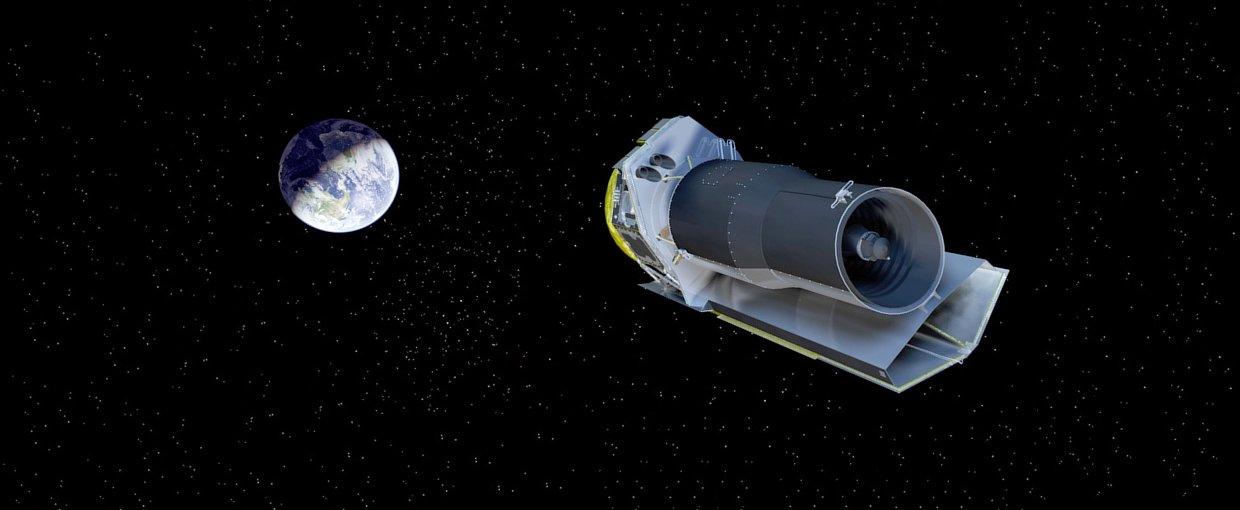
Date:
Space telescopes are earth-orbiting telescopes that augment work done by ground-based instruments. Because of their location outside Earth's atmosphere, space telescopes can collect data from electromagnetic sources like heat, x-rays and gamma rays, which are altered when they pass through our atmosphere. In addition to acting like a dirty windshield for earth-based telescopes, atmospheric water vapor prevents us from detecting heat from objects in space. Hubble Space Telescope is a well-known example of a space telescope sited above earth’s atmosphere, where it has a clearer view of visible light from the distant reaches of the universe.
Spitzer Space Telescope was specifically designed to survey the night sky in search of the heat or infra-red signatures of astronomical objects and regions. Spitzer allowed scientists to see through dust-clouded cosmic regions to observe objects and phenomenon that are hidden from optical telescopes. Dusty stellar nurseries, extrasolar planets, centers of galaxies, and newly forming planetary systems hidden behind thick curtains of cosmic dust would remain unseen without Spitzer’s unique heat-detecting capability.
Named after astrophysicist Lyman Spitzer, who in 1965 first proposed what later became Hubble Space Telescope, Spitzer Space Telescope was launched in 2003. Expected to last for just 2.5 years, Spitzer continued generating good results for an amazing 16 years after it was first activated. It was decommissioned in January 2020, when it finally ran out of the coolant needed to chill its detectors. It will stay in its current orbit until it falls back to Earth at some point in the distant future.
The James Webb Space Telescope, a successor to both Spitzer Space Telescope and Hubble Space Telescope, is expected to launch in 2021.


